 Nakatane
Town Air Pollution Nakatane
Town Air Pollution
中種子町の大気汚染
Note: The information on this page
was translated from English to Japanese using Google
Translate.
注: このページの情報は、Google
翻訳を使用して英語から日本語に翻訳されています。
For three years we lived in the
Nishino District of Minamitane Town on Tanegashima Island.
During those years none of our neighbors were burning their
trash, at least as far as we knew. After a few months in America we returned to the
island and purchased a property in the Noma District of
Nakatane Town. Most of the neighbors in this place burn
their trash, especially the adjacent neighbor.
私たちは種子島の南種子町西野地区に3年間住んでいました。その間、少なくとも私たちが知る限り、近所の人は誰もゴミを燃やしていませんでした。アメリカで数か月過ごした後、私たちは島に戻り、中種子町野間地区に不動産を購入しました。この場所のほとんどの隣人、特に隣接する隣人はゴミを燃やします。 |
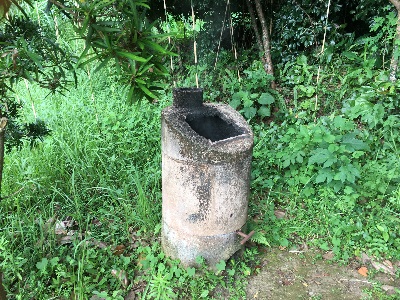 Toxic
Fumes Toxic
Fumes
有毒ガス
This has been a problem for us from the beginning. During
the Summer especially, our neighbor would burn his trash in
an incinerator in his backyard. We leave all of windows open
during the Summer to enjoy the fresh air. Many days our
bedroom was filled with smoke and the toxic fumes of burning
plastic, Styrofoam, and other manmade materials. We went and
asked the neighbor not to burn garbage any more but he
continued.
これは私たちにとって当初からの問題でした。特に夏の間、近所の人は裏庭の焼却炉でゴミを燃やしていました。夏の間は新鮮な空気を楽しむために窓をすべて開けておきます。何日もの間、私たちの寝室は煙と、プラスチック、発泡スチロール、その他の人工材料が燃えたときの有毒ガスで満たされていました。私たちは近所の人にこれ以上ゴミを燃やさないようにお願いしましたが、彼は続けました。 |
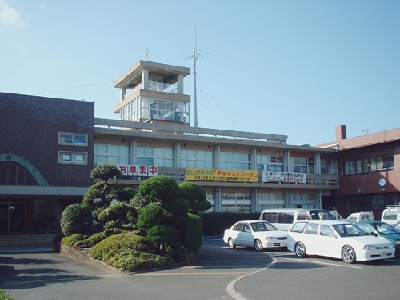 Nakatana
Town Contacted Nakatana
Town Contacted
中種子町連絡
We contacted some of the officials of Nakatane Town and they
spoke with the neighbor about the burning garbage. This also
had no affect and the neighbor continued to burn garbage.
The only choice was to call the police. They came out and
told the neighbor it was illegal to burn anything, including
natural materials such as grass and wood, and instructed him
to remove the trash burning receptacle from his backyard.
私たちは中種子町の職員数名に連絡を取り、近所の人と燃えるゴミについて話しました。これも影響はなく、隣人はゴミを燃やし続けました。唯一の選択肢は警察に通報することでした。彼らは出てきて、近所の人に、草や木などの天然物を含むあらゆるものを燃やすことは違法であると告げ、裏庭からゴミを燃やす容器を撤去するよう指示した。 |
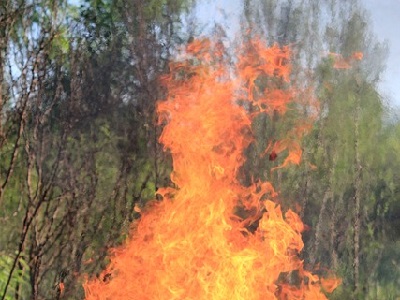 Burning
Continues Burning
Continues
焼却は続く
Then soon after the neighbor began trimming the grass and
bushes in his adjacent farm and began hiding his garbage in
the grass and bushes and burning huge piles directly
adjacent to our property. For a couple of days we could not
use our backyard, pieces of ash made a mess all over our
property, and our laundry smelled like smoke. We decided to
call the police again and they once again told him to
discontinue burning any materials on his property and they
took his picture next to the pile of burning materials.
About a week later he began burning materials again in
almost exactly the same place including trash. The police
were called once again and took his picture next to the
piles of materials again.
それから間もなく、隣人は隣接する農場の草や藪を刈り始め、ゴミを草や藪の中に隠し、私たちの敷地のすぐ隣にある巨大な山を焼き始めました。数日間、私たちは裏庭を使うことができず、灰の破片が敷地内を散らかし、洗濯物は煙のような臭いがしました。私たちは再び警察に電話することにしました。警察は再び彼に、敷地内での物を燃やすのをやめるよう言い、燃えている物の山の隣で彼の写真を撮りました。約1週間後、彼は再びほぼ同じ場所でゴミも含めて材料を燃やし始めた。警察は再び呼ばれ、再び資料の山の隣で彼の写真を撮った。 |
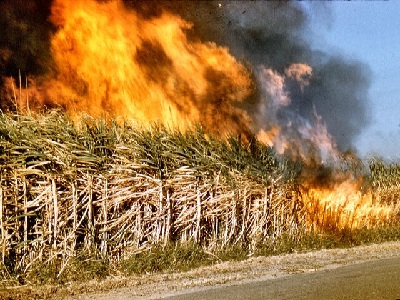 Farm
Burning Farm
Burning
畑での焼却
We realize the need for local farmers to burn grass, weeds,
and wood in order to make their farming easier. We don't
mind this but the burning of trash is unacceptable. This
releases toxic fumes into the air and is a health and safety
issue. We believe many of the Nakatane Town residents burn
their trash to avoid paying the fees to purchase the
required town trash bags. When we throw out our trash every
week there is often little or no trash from other families
in the trash bin.
私たちは、地元の農家が農業を容易にするために草、雑草、木材を燃やす必要があることを認識しています。私たちはそれを気にしませんが、ゴミを燃やすことは容認できません。これにより有毒ガスが空気中に放出され、健康と安全の問題になります。中種子町の住民の多くは、必要な町のゴミ袋の購入費を避けるために、ゴミを燃やしていると考えられます。私たちが毎週ゴミを捨てると、ゴミ箱には他の家族のゴミがほとんど、またはまったくないことがよくあります。 |
|
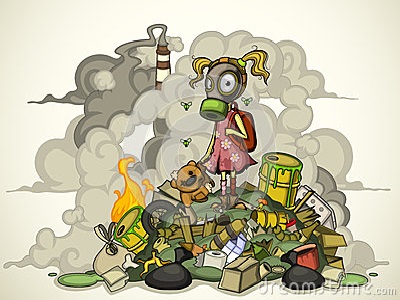 Trash
burning Facts Trash
burning Facts
ゴミ焼却の事実
The open burning of waste is a disposal method of waste or
garbage. It is a disposal method used globally, but often
used in low and middle-income countries that lack adequate
waste disposal infrastructure. Numerous governments and
institutions have identified the open burning of waste as a
major contributor to greenhouse gas emissions. It also poses
health risks with the cocktail of air pollutants often
created when waste is burned in an open air environment.
廃棄物の野焼きは、廃棄物またはゴミの処理方法です。これは世界中で使用されている処理方法ですが、適切な廃棄物処理インフラが不足している低中所得国でよく使用されています。多くの政府や機関は、廃棄物の野焼きが温室効果ガス排出の主な原因であると認識しています。また、屋外環境で廃棄物を燃やすときにしばしば生成される大気汚染物質のカクテルにより、健康上のリスクも引き起こされます。
At COP26 open waste burning was raised as a major
contributor to climate change. It produces a wide range of
atmospheric pollutants including short lived climate
pollutants (SLCPs), such as black carbon (BC). BC emissions
are a major source of fine particulate matter, with a
climate change impact up to 5,000 greater than CO2.
COP26では、廃棄物の野焼きが気候変動の主な原因として取り上げられました。ブラックカーボン(BC)などの短寿命気候汚染物質(SLCP)を含む幅広い大気汚染物質を生成します。
BC の排出は微小粒子状物質の主要な発生源であり、気候変動への影響は CO2 より最大 5,000 倍大きくなります。
The United Nations has raised concerns about the amount of
black carbon and methane produced from open burning as a
method of waste disposal. Many cities and regions suffer
with air pollution and low air quality as a direct result of
open burning of waste.
国連は、廃棄物処理方法としての野焼きによって生成されるブラックカーボンとメタンの量について懸念を表明しています。多くの都市や地域は、廃棄物の野外焼却の直接の結果として、大気汚染と低大気質に苦しんでいます。
According to the Canadian government it is common for many
toxic gases to be released into the atmosphere as a result
of open burning of waste. They can include arsenic, mercury,
lead, carbon monoxide and nitrogen oxides. Studies by
researchers from London's King’s and Imperial colleges both
showed that burning of polystyrene and polyethylene
terephthalate produce high amounts of soot. Both are common
in plastic water bottles.
カナダ政府によると、廃棄物の野焼きの結果、多くの有毒ガスが大気中に放出されるのが一般的です。それらには、ヒ素、水銀、鉛、一酸化炭素、窒素酸化物が含まれる場合があります。ロンドンのキングス・カレッジとインペリアル・カレッジの研究者らによる研究では、ポリスチレンとポリエチレン・テレフタレートを燃焼させると大量の煤が発生することが示された。どちらもペットボトルによく見られるものです。
The climate change conference COP26 held an official side
event focused on raising awareness of the open burning of
waste. In September 2022, an agreement was reached on
reducing open waste burning in Africa at the 18th session of
the African Ministerial Conference on the Environment
(AMCEN). The conference hosted delegates from 54 African
countries.
気候変動会議COP26では、廃棄物の野焼きに対する意識向上に焦点を当てた公式サイドイベントが開催された。
2022年9月、アフリカ環境閣僚会議(AMCEN)の第18回会合で、アフリカにおける野焼き廃棄物の削減について合意に達しました。この会議にはアフリカ
54 か国の代表者が参加しました。 |
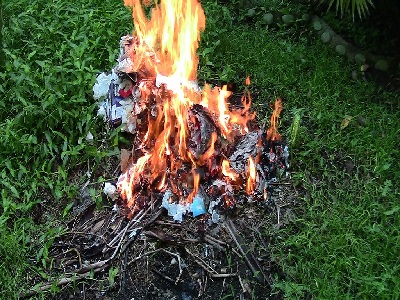 Burn
Piles Burn
Piles
バーンパイル
The burn pile or the burn pit is one of the simplest and
earliest forms of waste disposal, essentially consisting of
a mound of combustible materials piled on the open ground
and set on fire, leading to pollution.
バーンパイルまたはバーンピットは、廃棄物処理の最も単純かつ初期の形式の 1
つであり、基本的には可燃性物質の山を野外に積み上げて火をつけ、汚染を引き起こします。
Burn piles can and have spread uncontrolled fires, for
example, if the wind blows burning material off the pile
into surrounding combustible grasses or onto buildings. As
interior structures of the pile are consumed, the pile can
shift and collapse, spreading the burn area. Even in a
situation of no wind, small lightweight ignited embers can
lift off the pile via convection, and waft through the air
into grasses or onto buildings, igniting them. Burn piles
often do not result in full combustion of waste and
therefore produce particulate pollution.
燃えた杭は、たとえば、風によって燃えている物質が杭から周囲の可燃性の草や建物に吹き飛ばされた場合、制御不能な火災を広げる可能性があり、実際に広がっています。杭の内部構造が消耗すると、杭が移動して崩壊し、燃焼領域が広がる可能性があります。風がない状況でも、小さな軽量の発火した残り火が対流によって山から浮き上がり、空中を漂って草や建物の上に流れ込み、それらに着火する可能性があります。バーンパイルは廃棄物の完全燃焼をもたらさないことが多く、そのため粒子汚染が発生します。
Backyard barrel burning of household and garden wastes,
still allowed in some rural areas, generates 580 grams (20
oz) of dioxins annually. Studies conducted by the US-EPA
demonstrated that one family using a burn barrel produced
more emissions than an incineration plant disposing of 200
metric tons (220 short tons) of waste per day by 1997 and
five times that by 2007 due to increased chemicals in
household trash and decreased emission by municipal
incinerators using better technology.
一部の農村地域では依然として許可されている、家庭や庭の廃棄物の裏庭での樽焼きは、年間580グラム(20オンス)のダイオキシンを生成します。米国環境保護庁が実施した調査によると、家庭での化学物質の増加により、燃焼バレルを使用しているある家庭は、1日あたり200メートルトン(220ショートトン)の廃棄物を処理する焼却工場よりも多くの排出量を出し、2007年にはその5倍になったことが実証されました。より優れた技術を使用した自治体の焼却炉によるゴミの排出と排出量の削減。 |
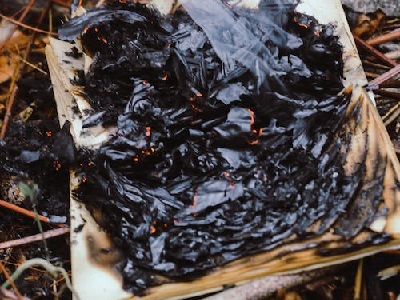 Health
Effects Health
Effects
健康への影響
Scientific researchers have investigated the human health
effects of pollutants produced by waste incineration. Many
studies have examined health impacts from exposure to
pollutants utilizing U.S. EPA modeling guidelines. Exposure
through inhalation, ingestion, soil, and dermal contact are
incorporated in these models. Research studies have also
assessed exposure to pollutants through blood or urine
samples of residents. Findings from a systematic review of
previous research identified a number of symptoms and
diseases related to incinerator pollution exposure. These
include neoplasia, respiratory issues, congenital anomalies,
and infant deaths or miscarriages. Some studies also
identified possible cancer risk. Simply put, trash burning
in residential areas should not be allowed.
科学研究者たちは、廃棄物の焼却によって生成される汚染物質が人体に及ぼす影響を調査しました。多くの研究が、米国 EPA
モデリング
ガイドラインを利用して、汚染物質への曝露による健康への影響を調査しています。これらのモデルには、吸入、経口摂取、土壌、皮膚接触による暴露が組み込まれています。研究研究では、住民の血液または尿サンプルを通じて汚染物質への曝露も評価されています。過去の研究の系統的レビューからの結果により、焼却炉の汚染暴露に関連する多くの症状や病気が特定されました。これらには、新生物、呼吸器疾患、先天異常、乳児の死亡または流産が含まれます。いくつかの研究では、癌のリスクの可能性も特定されました。簡単に言えば、住宅地でのゴミの焼却は許されるべきではありません。 |
|